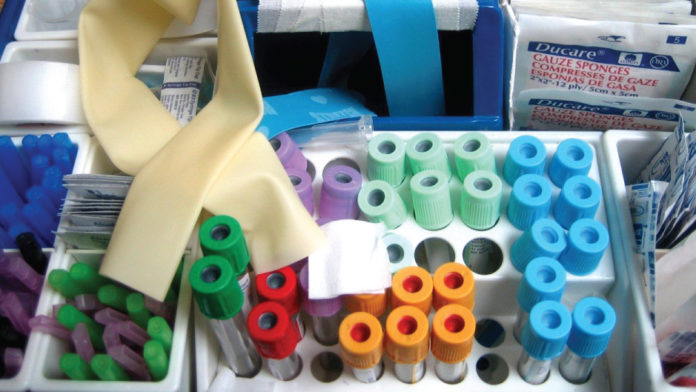Have you ever wondered if fasting for at least eight hours before a blood test is really necessary? Traditionally, patients are required to fast before a “lipid profile” blood test. The lipid profile is comprised of fats, cholesterol, and similar substances that provide energy to cells throughout the body and measuring the lipid profile helps doctors determine a patient’s risk of developing heart disease. However, new research suggests that not fasting before the test may actually be advantageous in several ways.
Most individuals eat several meals throughout the day, sometimes even a cookie or three between meals. Therefore, a fasting blood sample does not represent realistic states of lipids over a typical 24-hour day. So, why are patients required to fast? Surprisingly, there isn’t a concrete evidence-based answer.
One reason is that fasting measurements are thought to be more consistent. However, Canadian researchers Dr. Davinder Sidhu and Dr. Christopher Naughler, among other research teams, found that the lipid profile changes minimally after normal eating.
A second reason is that because fasting has been the clinical standard, we only have normal or abnormal cut-off values for fasting lipids. This is changing, though, as many large-scale studies and clinical trials using the non-fasting lipid profile now provide sufficient evidence to develop cut-off values for non-fasting lipids.
It was also found that the non-fasting lipid profile may not only be sufficient, but may actually be superior to the fasting lipid profile for assessing heart disease risk. A study followed over 26,000 women for 11 years and showed that non-fasting lipids are better at predicting heart disease risk than fasting lipids. Essentially, this is because the component that causes heart disease is higher in the blood after a meal.
After eating, fat and cholesterol are packaged into a large sphere, called a chylomicron, which travels through your bloodstream. As the chylomicron travels, it becomes smaller and smaller as fat is taken up by different organs for energy. These smaller spheres, known as called remnants, are small enough to go inside the vessel wall and lead to an accumulation of fat and cholesterol. Ultimately, this build-up blocks blood from flowing your vessel; if this occurs near the heart, it can lead to a heart attack.
In addition to being a better indicator of heart disease risk, the non-fasting lipid profile simplifies blood sampling for patients, laboratories, and doctors. Patients would no longer have to return on a separate day for fasting blood tests. Laboratories would no longer be burdened by a large volume of patients attending for morning tests. Lastly, doctors could immediately review a patient’s blood test results, rather than having to review them at a later date.
In 2009, non-fasting lipid testing became clinical standard in Denmark and in 2014 was endorsed by the National Clinical Guideline Centre (NICE) in the United Kingdom. However, guidelines from the American Heart Association in 2013 still indicate that the fasting lipid profile is preferred, while the 2016 Canadian Cardiovascular Society Guidelines provide doctors the option of using fasting or non-fasting lipid testing.
By effectively communicating and leveraging new research, clinical practice standards can keep abreast with an ever-evolving world of scientific research. As additional studies on the ability of non-fasting lipids to predict heart disease emerge, the days of fasting for the lipid profile blood test may be behind us.
*Note: While discussing and challenging current standards is important, it is even more important that you closely follow the instructions provided for your blood test to ensure your doctor interprets the results correctly.








































